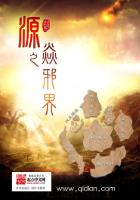From the time of Thales of Miletus, in the fifth century B.C., down to that of Copernicus in the fifteenth and Tycho Brahe in the sixteenth century A.D., observations have been from time to time carried on with more or less correctness, until in the present day the altitudes of the lunar mountains have been determined with exactitude. Galileo explained the phenomena of the lunar light produced during certain of her phases by the existence of mountains, to which he assigned a mean altitude of 27,000 feet. After him Hevelius, an astronomer of Dantzic, reduced the highest elevations to 15,000 feet; but the calculations of Riccioli brought them up again to 21,000 feet.
At the close of the eighteenth century Herschel, armed with a powerful telescope, considerably reduced the preceding measurements.
He assigned a height of 11,400 feet to the maximum elevations, and reduced the mean of the different altitudes to little more than 2,400 feet. But Herschel's calculations were in their turn corrected by the observations of Halley, Nasmyth, Bianchini, Gruithuysen, and others; but it was reserved for the labors of Boeer and Maedler finally to solve the question. They succeeded in measuring 1,905 different elevations, of which six exceed 15,000 feet, and twenty-two exceed 14,400 feet. The highest summit of all towers to a height of 22,606 feet above the surface of the lunar disc. At the same period the examination of the moon was completed. She appeared completely riddled with craters, and her essentially volcanic character was apparent at each observation.
By the absence of refraction in the rays of the planets occulted by her we conclude that she is absolutely devoid of an atmosphere.
The absence of air entails the absence of water. It became, therefore, manifest that the Selenites, to support life under such conditions, must possess a special organization of their own, must differ remarkably from the inhabitants of the earth.
At length, thanks to modern art, instruments of still higher perfection searched the moon without intermission, not leaving a single point of her surface unexplored; and notwithstanding that her diameter measures 2,150 miles, her surface equals the one-fifteenth part of that of our globe, and her bulk the one-forty-ninth part of that of the terrestrial spheroid-- not one of her secrets was able to escape the eyes of the astronomers; and these skillful men of science carried to an even greater degree their prodigious observations.
Thus they remarked that, during full moon, the disc appeared scored in certain parts with white lines; and, during the phases, with black. On prosecuting the study of these with still greater precision, they succeeded in obtaining an exact account of the nature of these lines. They were long and narrow furrows sunk between parallel ridges, bordering generally upon the edges of the craters. Their length varied between ten and 100miles, and their width was about 1,600 yards. Astronomers called them chasms, but they could not get any further. Whether these chasms were the dried-up beds of ancient rivers or not they were unable thoroughly to ascertain.
The Americans, among others, hoped one day or other to determine this geological question. They also undertook to examine the true nature of that system of parallel ramparts discovered on the moon's surface by Gruithuysen, a learned professor of Munich, who considered them to be "a system of fortifications thrown up by the Selenitic engineers." These two points, yet obscure, as well as others, no doubt, could not be definitely settled except by direct communication with the moon.
Regarding the degree of intensity of its light, there was nothing more to learn on this point. It was known that it is 300,000 times weaker than that of the sun, and that its heat has no appreciable effect upon the thermometer. As to the phenomenon known as the "ashy light," it is explained naturally by the effect of the transmission of the solar rays from the earth to the moon, which give the appearance of completeness to the lunar disc, while it presents itself under the crescent form during its first and last phases.
Such was the state of knowledge acquired regarding the earth's satellite, which the Gun Club undertook to perfect in all its aspects, cosmographic, geological, political, and moral.















